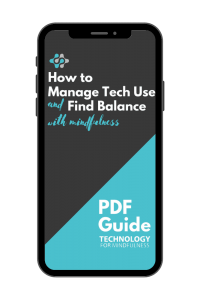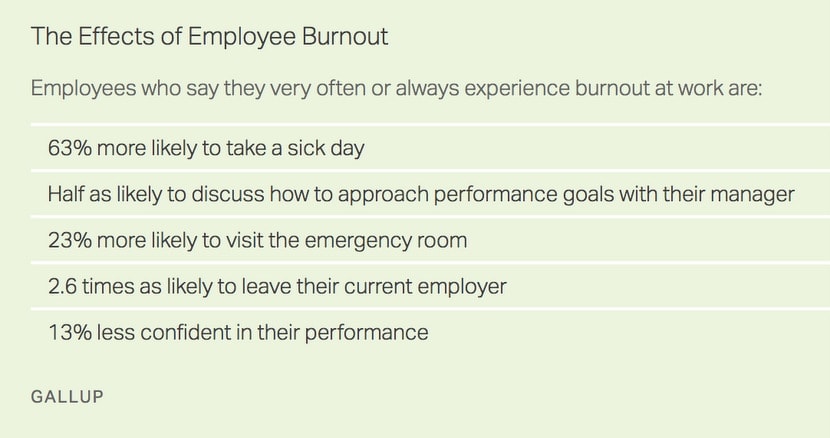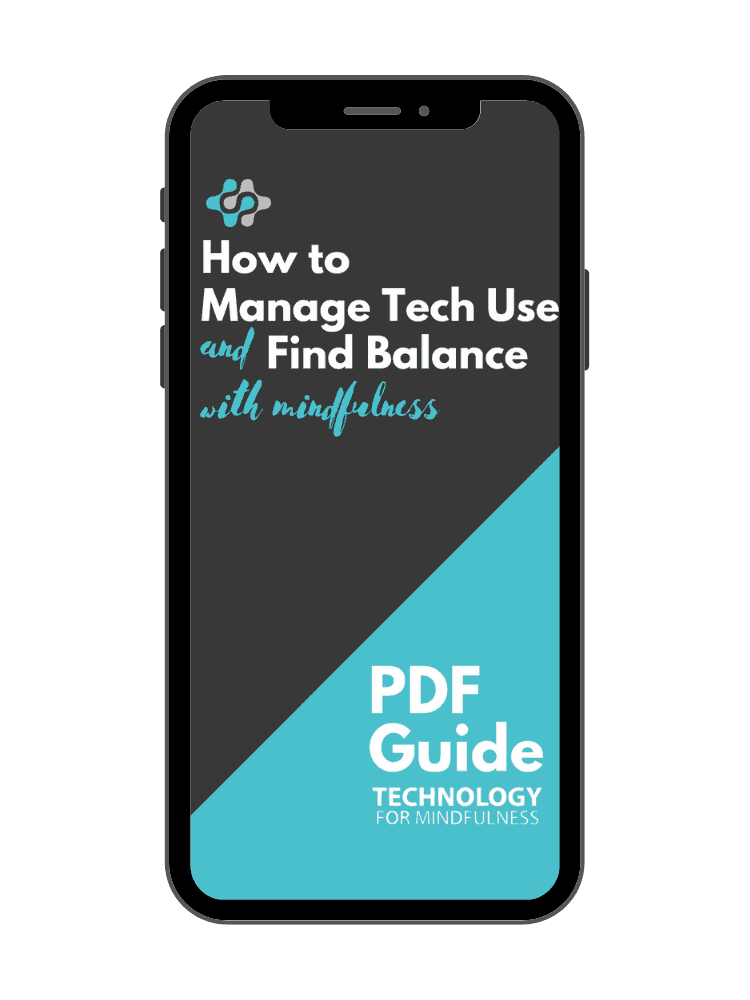
28 Benefits of Mindfulness Backed by the Latest Scientific Research
The benefits of mindfulness are vast and varied, but there’s a lot of misinformation out there, so it can be difficult deciphering what the real, reliable, and in many cases proven benefits are of mindfulness practice.
Read on to learn what those benefits are and how to start your own mindfulness practice.
Less than a decade ago, in the blink of an eye mindfulness became a household term that was utterly inescapable.
Everywhere you looked there was a new article that talked about this health benefit or that psychological enhancement.
And, what’s more, from just a few minutes of a relatively simple practice each day.
Years later, it’s clear that mindfulness isn’t a panacea as it was often reported to be in many exaggerated news stories.
However, over that same period, and from roughly a decade prior to its boom in popularity, a large number of rigorous scientific studies have amassed that have shown the unequivocal benefits of a regular mindfulness practice.
With that said, because of all the sensational articles out there, it can be tough to separate the proven benefits from those without scientific proof, or at least grounded in first-hand examples.
It’s true that the value of mindfulness or any kind of meditation or especially contemplative practice shouldn’t be dictated solely upon the merit of scientific study. There are other areas of life and forms of value and meaning we can find through such practices.
However, it’s also important to separate the fact from pure fiction. Plus, it’s cool to know just how impactful such a simple little practice can be for your entire life.
So, let’s talk about what the real, (so far) scientifically-backed benefits of mindfulness training are.
What are the benefits of mindfulness?
The development of the quality or state of mindfulness, which is often defined as “a moment-to-moment, non-judgmental awareness,” benefits not only adults but children and teens as well.
In addition to this, there are several benefits much more relevant to the workplace than anything.
That’s why we’ve separated this first benefits section into three parts:
- The major benefits of mindfulness
- The benefits of mindfulness for kids and students
- And the benefits of mindfulness at work
But that’s not all we’ll cover in this guide. After diving into the various benefits, we’ll give you the tools you need to get your own mindfulness practice started as well as additional resources for helping you dive deeper.
We’ll be covering…
Table of Contents:
- 5 Major benefits of mindfulness
- Benefits of mindfulness for kids and students
- Benefits of mindfulness at work
- How to practice mindfulness
- Developing a consistent mindfulness practice
- Additional mindfulness resources
- Frequently asked questions
- References
Let’s get started with major benefit #1, how mindfulness not only reduces stress but gives us the ability to better manage new stress moving forward.
But before we do, if you’re new to mindfulness, check out this guide with simple practices to get you started, find balance, and manage your tech use:

Find balance, take back your life
Learn how to manage tech use, reduce stress, and find balance with our free PDF guide on simple mindfulness techniques.
1. Reduces stress (and our ability to manage future stress)
The most commonly reported benefit by far, mindfulness practice helps reduce stress.
But more than just reducing our current stress levels, mindfulness is a tool for managing more effectively stress and permanently.
The first time you go to sit down, you’ll probably notice just how hectic the mind can be. In fact, without regular meditation, it’s pretty much like this 24/7.
Mindfulness gives you a way of calming the inner chatter and bringing clarity and perspective to what’s going on inside of you, which is invaluable when you’re dealing with something as nebulous as stress.
According to one study reported on by the American Psychological Association,
“In one study, participants randomly assigned to an eight-week mindfulness-based stress reduction group were compared with controls on self-reported measures of depression, anxiety and psychopathology, and on neural reactivity as measured by fMRI after watching sad films (Farb et al., 2010). The researchers found that the participants who experienced mindfulness-based stress reduction had significantly less anxiety, depression and somatic distress compared with the control group.”
The report went on to mention that, “In 2010, Hoffman et al. conducted a meta-analysis of 39 studies that explored the use of mindfulness-based stress reduction and mindfulness-based cognitive therapy. The researchers concluded that mindfulness-based therapy may be useful in altering affective and cognitive processes that underlie multiple clinical issues.“
Several other studies have shown similar findings, including one study that found that the awareness developed through mindfulness training helps us develop an adaptive response to daily stressors.
And another study found that mindfulness helps us better manage difficult emotions, which further helps reduce stress.
2. Improves physical health
Another lesser-known benefit and a perhaps more surprising one, mindfulness has been shown to improve our physical health in several different ways, including:
- Managing chronic pain
- Encouraging healthy eating habits
- Improving sleep quality
- Heightening immune function
It might be hard to believe that mindfulness can help manage chronic pain, but when you understand why, it becomes clear.
Chronic pain isn’t just about the pain itself but also the story you tell yourself about the pain, including the frustration that builds up alongside the pain and the exhaustion you often feel dealing with it, as anyone with chronic pain will tell you.
Mindfulness helps you deal with these feelings. As a result, it helps you better manage chronic pain, as one study in analyzing 104 patients suffering from chronic pain found. According to the study, “low mindfulness” may reliably predict negative affect, pain catastrophizing, pain-related fear, and even pain intensity.
Other studies have found that mindfulness training encourages healthier eating habits and can even help you lose weight, as Jill Suttie of Greatergood.berkeley.edu reported:
“Researchers are learning that teaching obese individuals mindful eating skills—like paying closer attention to their bodies’ hunger cues and learning to savor their food—can help them change unhealthy eating patterns and lose weight. And, unlike other forms of treatment, mindfulness may get at the underlying causes of overeating—like craving, stress, and emotional eating—which make it so hard to defeat.”
Additional health-related benefits
But that’s only touching the surface of the potential physical health benefits of mindfulness. Additional studies have found that mindfulness may be able to improve sleep quality, as one University of Utah study reported:
“’People who reported higher levels of mindfulness described better control over their emotions and behaviors during the day. In addition, higher mindfulness was associated with lower activation at bedtime, which could have benefits for sleep quality and future ability to manage stress,’ study researcher Holly Rau said in a statement.”
It may also improve immune function, as one 2003 study on changes to immune function as a result of mindfulness meditation found.
3. Makes us more resilient
In addition to the reported benefits related to improving mental health, many studies have shown that mindfulness can increase resilience to difficult emotions and even enhance certain basic processes such as memory and focus.
The most notable collection of these types of benefits are related to mindfulness’s ability to help you manage difficult thoughts and emotions and build resilience.
In a recent study published in the journal Personality and Individual Differences (a finding since echoed in several other studies), researchers Badri Bajaj and Neerja Pande studied the effects of mindfulness training on resilience, noting, “Individuals with higher mindfulness have greater resilience, thereby increasing their life satisfaction.”
They went on to say that those who are more mindful “can better cope with difficult thoughts and emotions without becoming overwhelmed or shutting down (emotionally)…Pausing and observing the mind may (help us) resist getting drawn into wallowing in a setback.”
Closely associated with this, mindfulness has also been shown in a separate study to reduce emotional reactivity, which is described as “involuntary and usually overly intense reaction to an external emotional stimulus, which often leads to feeling victimized by your emotions”. In other words, it makes us less likely to overreact to things that happen to us.
The study found that when participants were shown emotionally upsetting pictures, those who practiced mindfulness were more easily able to disengage from the emotions attached to the task as well as focus better during.
4. Improves relationships
One of the most unexpected benefits of mindfulness is its ability to help improve our relationships.
As if it wasn’t enough that regular mindfulness practice can help you manage and enhance so much of your own mental and physical health, it also improves the health of the relationships you have with those around you.
Sure, the reduced stress, better sleep, and improved ability to cope with difficult emotions are all ways that mindfulness can indirectly help improve your relationships. But there’s more.
Studies have found that whether someone practices mindfulness is a measurable factor that can predict relationship satisfaction as, the stress benefits aside, it also improves our ability to communicate our emotions to one another.
Other studies have shown that mindfulness improves our relationships with our children, we’re happier with our own parenting skills, and the social skills of the children who practice mindfulness with their parents improve.
Another important element of mindfulness practice as it relates to improving our relationships is its ability to help us increase our empathy and compassion for others around us.
Empathy is our ability to understand what others are feeling, compassion the compulsion to want to help those whom we see could use our help (big or small).
Both are critical skills in terms of maintaining strong relationships and mindfulness helps us develop both in good measure.
Several studies, like the ones mentioned here, have shown that mindfulness can help us increase our empathy and compassion not just for others but ourselves as well, a critical aspect in the process of self-forgiveness.
5. Improves our ability to manage both mental and physical illness
This last point combines some of what we’ve talked about thus far, but puts it all towards an entirely separate benefit with far-reaching significance especially for those suffering from a serious illness.
Mindfulness has been shown through several studies to improve our ability to manage mental and physical illnesses, such as depression and cancer.
Mindfulness’s ability to manage the symptoms of depression is well-reported and still stands as the most effective inexpensive support treatment for the mental illness.
One study found that for those experiencing depressive symptoms prior to the study, mindfulness-based cognitive therapy was just as effective as antidepressants:
“For those patients who had experienced depressive symptoms during the remission phase prior to the study, MBCT training was as effective as antidepressants at protecting them from a relapse of depression, and more effective than a placebo treatment.”
Mindfulness also helps manage symptoms of terminal illness
One study on cancer patients found that mindfulness can reduce symptoms of stress due to the illness, enhance positive feelings of spirituality, and enhance vigor.
Another study found that a cancer-specific mindfulness program was able to decrease rumination– defined as a deep recurring thought about something, in this case, something negative and damaging to one’s mental well-being– worry, and judgment in cancer patients toward themselves and their illness.
And yet another study found similar benefits for breast cancer survivors, in which mindfulness not only reduced stress and anxiety in patients but also increased self-kindness and enhanced post-traumatic growth.
Benefits of mindfulness for kids and students
So far, we’ve touched on several benefits that are relevant to kids, teens, and young adults, the latter being namely students dealing with the pressures of college.
However, there are additional benefits that have been uncovered by studies done specifically on kids and students.
One study on med and psych students found that participants had decreased reactivity as well as greater patience, self-acceptance, tolerance, and other qualities relative to creating healthy relationships.
Several major studies have shown links between mindfulness and improved academic performance as well.
A study on elementary students found that participants who were instructed to practice mindfulness developed better emotional regulation, prosocial behaviors, and improved academic performance.
And another study found that teens who participated in a mindfulness program had reduced depression and anxiety, again leading to greater academic performance.
And a large 2016 follow-up study done from a previous 2012 study found that mindfulness can help children within the mental health care and welfare systems improve their confidence, mood, emotion regulation, social skills, and ability to focus.
The mindfulness – bullying connection
In addition to the more direct benefits of mindfulness for kids and students, several studies have also found that mindfulness can help with bullying in schools on several different levels.
On one level, recent studies have found that mindfulness can help kids manage the depressive symptoms that can develop as a result of being bullied.
And another study surprisingly even found that mindfulness may be a useful tool for upending bullying from the very source of the problem. A 2016 study found that using mindfulness and other practices to increase empathy can help stop children from developing bullying behavior in the first place.
Benefits of mindfulness at work
Similar to the more specific benefits for children and students, mindfulness also offers several benefits more specific to personal performance and the workplace.
One study found that employees who practiced an eight-week mindfulness program had greater job satisfaction and enhanced performance (in addition to reduced stress).
More specifically, another study found that mindfulness has the ability to improve executive functioning, an important set of skills such as attention, organizing, planning, perspective, and self-monitoring (among others) which are all relevant to daily work.
Mindfulness and burnout
Burnout is a major problem across the globe, but especially in the U.S. where 23% of employees in a recent Gallup survey reported feeling burnt out at work often or always, with another 44% saying they felt burned out sometimes.
However, several studies have found that mindfulness can help quell the tide of burnout.
One study found that burnout happens less in workplaces that encourage physical spaces where employees can practice mindfulness.
And another study found that practicing mindfulness can result in lower levels of burnout, increased well-being, and even serve as a kind of cushion against the psychological challenges of a bad working environment.
In terms of personal performance, mindfulness has been connected to several relevant benefits. In fact, one major study found that mindfulness not only improves resilience but:
- Mental stamina
- Working memory
- Creativity, attention
- Reaction speed, and
- Emotional intelligence
You can’t meditate just once (+ Tips for developing a consistent mindfulness practice)
Now that you know more about the various benefits of mindfulness, it’s important that we shift gears and talk about practice.
Mindfulness isn’t a band-aid you can apply and then walk away from. If you take a closer look at the countless studies we discussed above, nearly all involved having participants practice mindfulness for at least several weeks consistently before any testing took place.
To start reaping the benefits of mindfulness, you need to develop mindfulness– and you can only do that through practice.
Don’t sit and meditate once or try a mindful eating practice and think, “well, I don’t feel any different,” and think that it just doesn’t work for you.
It doesn’t work that fast for most people, and even if you do feel or notice anything, you won’t notice the real benefits until you’ve practiced consistently for at least several weeks, if not months.
Tips for developing a consistent mindfulness practice
Fortunately, you don’t have to invest much time into your practice, you just need to be consistent. You can even sit for five-to-ten minutes and see real results over time.
With that said, here are a few tips for developing a consistent mindfulness practice:
- Keep the reason you were motivated to begin the practice in the first place close at hand: For example, if you became incredibly stressed at work and decided to try mindfulness to help you better manage that stress, write down a reminder to put up on the wall near where you meditate that your practice will help you master your stress.
- Find the right practice for you: Most people start by sitting in meditation, but other mindfulness practices are effective as well, such as mindful walking, eating, driving, or even cleaning.
- Keep it simple: Don’t complicate things in the beginning with multiple practices and long sitting or practice times. The more complicated you make your practice, the less likely you are to stick to it.
- Find a time that works for you: For some time, I meditated in the morning. It didn’t work for me. I’d always be falling asleep while sitting shortly after waking. Now, I prefer to sit at night and occasionally practice mindful walking in my backyard. It’s what works for me, something else might work better for you. Find your unique mindfulness practice.
Now, if you’re new to mindfulness, let’s talk about specific practice instructions to help get you started in the right direction.
How to practice mindfulness
There are many ways to practice mindfulness, from mindfully walking to driving and countless other practices.
However, to keep things simple, and because it’s where most start (as it’s generally the best place to start), we’re going to talk about formal mindfulness meditation.
With that said, keep in mind that this practice doesn’t have to be done while sitting in any specific position, time of day, or on the floor or a special cushion of any kind. In fact, you can even do it while walking.
You can do this practice while sitting in your office chair, taking five minutes out of your day during your lunch break or even step outside for a mindful walk.
You can also do this while sitting in your car before you walk back in the house after driving home from work. You certainly don’t need to be sitting atop a waterfall or at the edge of a steep cliff, like all those staged stock photos you see online everywhere:
It’s a super flexible practice and the one which most of the abovementioned studies were based on, so the most likely to replicate the said benefits.
To practice mindfulness meditation, find a comfortable, quiet, and private place to sit and follow these four steps:
1. Concentrate on your breath
First, become aware of your natural breathing pattern. Don’t try to change your breathing, though as you become aware of it you might notice yourself naturally breathing slower.
Focus on your breath but don’t concentrate so hard that a vein is popping out of your forehead.
You’re going to lose that concentration, and that’s fine. Let it happen and simply bring yourself back without making a fuss or trying to force yourself to stay focused.
A gentle but persistent effort is ideal.
2. Count each in-breath and out-breath as 1 up to 10
Next, as you’re concentrating on your breathing, count each breath up to ten.
For example:
- Breathe in: 1
- Breathe out: 2
- In: 3
- Out: 4
- Etc.
If you lose your count because your mind wandered, simply bring yourself back whenever you realize you lost your focus.
In the beginning, you’re likely going to become distracted about every few seconds. Don’t worry, you’re not horrible at meditation and everything goes through this same thing!
Keep at it and your concentration will strengthen over time.
3. Note thoughts, feelings, and sensations non-judgmentally
Next, what exactly is distracting you anyway?
Typically, in mindfulness practice, distractions classify under one of three categories:
- Thought
- Feeling, or
- Sensation (often bodily or a sound or feeling from outside your body like a passing ambulance)
When you’re sitting, counting your breath, it will be one or multiple of these at a time that will arise and challenge your focus.
More often than not, you’ll be bombarded with thoughts along with the occasional feeling associated with that thought and even more rarely some kind of bodily or external sensation (assuming you found a quiet place!).
Your job at this point isn’t to kick yourself each time you’re distracted. Instead, it’s to do the opposite: notice the distraction (“I’m worried about my meeting next week”, “I’m thinking about what I’m going to make for dinner later tonight”) without passing judgment on yourself.
It’s a super common misconception that all meditation is about emptying the mind. Mindfulness is about the exact opposite: admitting your mind is chaotic and seeking to observe that chaos in its natural state.
Being nonjudgmental is hard (do your best)
Being nonjudgmental is one of the hallmarks of mindfulness practice.
When you become distracted, instead of telling yourself, “Ugh, I can’t do this,” and judging your ability to meditate or, “I’m too anxious” when you notice your mind bouncing back and forth between worries like a pinball, note the thought as if you were taking a mental snapshot and leave it alone without passing judgment on it.
In the beginning, this might feel awkward or seem impossible. All of that is perfectly normal to feel. With practice, you’ll develop the ability to successfully note these sensations nonjudgmentally, so you just need to keep at it.
Meditation is simple and straightforward, but no one ever said it was easy!
4. Go back to counting your breath
Lastly, once you’ve caught yourself being distracted and noted the thought, feeling, or sensation, simply return to your breath.
As mentioned earlier, this is going to happen constantly in the beginning and it will take some time before you can really start to quiet the mind (and some days you’ll be more like a crazy monkey than others).
There’s really nothing more to the practice in the beginning. Pretty simple!
Over time, you might start to unearth some difficult thoughts and feelings that are hidden below your conscious mind (“I’m not good enough,” “I always screw everything up,” “I’m not as smart as my sister,”).
This can be both enlightening and uncomfortable, but also valuable if you’re dedicated to real personal growth and the first step toward working through those deep-seated issues.
These are benefits that really can’t ever be quantified by science, but are nonetheless an important part of meditation practice and yet another reason to maintain a regular practice.
For more great, simple practices to get you started, check out our guide on practices to help you find balance and manage your tech use:

Find balance, take back your life
Learn how to manage tech use, reduce stress, and find balance with our free PDF guide on simple mindfulness techniques.
Getting started: Guided mindfulness meditations
If mindfulness seems strange and foreign to you and you’re having a hard time meditating on your own, there’s a tool available to you that can make a big difference in the beginning: guided meditations.
Guided meditations are great because they’re a way of having someone walk you through a session without having to search out a teacher or a center or class near you (if there even is one) and drive.
Here are samples of few of the meditations we’ve published, all great practices to help you get started:
To get the full version of these meditations, and to enjoy other meditations we’ve published, check out our complete meditations list on meditation app Insight Timer here.
Additional mindfulness resources
The benefits of mindfulness are wide and far-reaching, positively impacting not only our ability to manage surface-level stress but issues with our physical body, mental health, and even chronic illness.
But remember: the benefits of mindfulness are found in ongoing practice. You won’t be able to take advantage of the benefits of mindfulness unless you maintain a regular practice.
So, use the steps we outlined above as well as the meditations and check out the additional resources below to help take your practice further:
- 24 Mindfulness Tips for Beginners to Bring Balance to Daily Life
- The Best Free Mindfulness Meditation Apps in 2019
- Mindfulness at Work: Practical Tips for Busy Professionals
- 5 Mindfulness Practices for Stressed-Out Teachers
- And check out dozens of amazing episodes with our guests on the TFM podcast, exploring the convergence between mindfulness and tech.
Frequently asked questions
Many studies have shown that mindfulness improves our ability to manage the symptoms of anxiety.
One study on teens, for example, showed that a mindfulness-based stress reduction program can decrease levels of depression and anxiety as well as improve academic performance.
Another study on male youths found that mindfulness training can reduce stress, anxiety, and improve participant’s ability to manage academic-related pressure.
Mindfulness gives you a way to manage the symptoms of anxiety, helping develop the clarity to work through the thoughts and sensations that act as triggers for the anxiety as well to help you see when an episode is arising and to prepare sooner.
Mindfulness can improve both your physical and mental health, by:
- Managing the secondary pain associated with chronic pain
- Encouraging healthy eating habits
- Improving sleep quality
- Heightening immune function
- Reducing stress and making the mind more resilient
- Improving personal relationships
- And giving us the ability to better manage both mental and physical illness
The specifics on how mindfulness does this differ depending on the effect. In the case of improving our ability to better manage chronic pain, mindfulness allows us to manage the psychological trap that those suffering from chronic pain often find themselves in, which has been proven to heighten the feelings of pain itself.
It allows us to develop the self-awareness to step outside of the story we’re telling ourselves about the pain and change our relationship with it.
Alternatively, it helps us reduce stress and better manage anxiety because of the effect it has at calming the mind and giving us clarity of thought.
Often, with both stress and anxiety, our interpretation of stimuli and events can cause our stress and anxiety to worsen, creating it in the case of stress and triggering it and worsening it in the case of anxiety.
Mindfulness gives us the power to settle the mind and gain better control of our mental faculties when situations like these threaten to trigger or worsen both.
Mindfulness can be described as a non-judgmental, moment-to-moment awareness.
It’s hard to understand why mindfulness is important until you begin to practice it. The importance of self-awareness in general, which mindfulness helps develop, is the critical benefit that many of the benefits of mindfulness arise from.
With greater self-awareness, you can notice that thing that’s been worrying you for weeks and take action to calm your mind and settle your nerves.
With greater self-awareness, you might realize that you’re not handling your relationship with your kids like you should be and take steps to improve it.
And with greater self-awareness, you might realize the mental trap you’re keeping yourself in each time you set a goal then promptly quit, always telling yourself, “You’re not good enough, anyway.”
Mindfulness gives us a sense of perspective that’s critical to so much in life, but regular mindfulness training also has a real, identifiable, and positive impact on your brain chemistry such as by expanding grey matter that helps improve learning and memory.
- Donald, J. N., & Atkins, P. W. B. (2016). Mindfulness and coping with stress: Do levels of perceived stress matter? Mindfulness 7, 1423-1436. https://link.springer.com/article/10.1007/s12671-016-0584-y
- Remmers, C., Topolinski, S., & Koole, S. L. (2016). Why being mindful may have more benefits than you realize: Mindfulness improves both explicit and implicit mood regulation. Mindfulness 7, 829-827. https://psycnet.apa.org/record/2016-17012-001
- Schütze R1, Rees C, Preece M, & Schütze M (2009). Low mindfulness predicts pain catastrophizing in a fear-avoidance model of chronic pain. Pain. 2010 Jan;148(1):120-7. https://www.ncbi.nlm.nih.gov/pubmed/19944534
- Better Eating Through Mindfulness (Jill Suttie). greatergood.berkeley.edu/article/item/better_eating_through_mindfulness
- Better living through mindfulness. archive.unews.utah.edu/news_releases/better-living-through-mindfulness/
- Davidson R.J., Kabat-Zinn J., Schumacher J., Rosenkranz M., Muller D., Santorelli S.F., Urbanowski F., Harrington A., Bonus K., Sheridan J.F. (2003). Alterations in brain and immune function produced by mindfulness meditation. Psychosom Med. 2003 Jul-Aug;65(4):564-70. ncbi.nlm.nih.gov/pubmed/12883106
- B. Bajaj & N. Pande (2015). Mediating role of resilience in the impact of mindfulness on life satisfaction and affect as indices of subjective well-being. Personality and Individual Differences 93:63-67. https://www.researchgate.net/publication/282332338_Mediating_role_of_resilience_in_the_impact_of_mindfulness_on_life_satisfaction_and_affect_as_indices_of_subjective_well-being
- C. N. M. Ortner, S. J. Kilner, P. D. Zelazo. Mindfulness meditation and reduced emotional interference on a cognitive task. Motivation and Emotion 31(4):271-283. Self-compassion.org/wp-content/uploads/publications/zelazo.pdf
- D. M. Davis & J. A. Hayes. What Are the Benefits of Mindfulness? A Practice Review of Psychotherapy-Related Research. Counseling Psychology Program, Pennsylvania State University. Psychotherapy 2011, Vol. 48, No. 2, 198. Traumacenter.org/products/pdf_files/Benefits_of_Mindfulness.pdf
- C. Carter, Ph.D. Mindfulness Makes Us Better Parents: Losing My Mindfulness. greatergood.berkeley.edu/raising_happiness/post/losing_my_mindfulness
- S. Shapiro, Greater Good Berkeley. Compassion and Empathy: Does Mindfulness Make You More Compassionate? https://greatergood.berkeley.edu/article/item/does_mindfulness_make_you_compassionate
- N. John-Henderson. Depression: Is Mindfulness as Good as Antidepressants? greatergood.berkeley.edu/article/research_digest/is_mindfulness_as_good_as_antidepressants#mindfulness_and_antidepressants
- Zernicke, K. A., Campbell, T. S., Speca, M., Ruff, K. M., Tamagawa, R., & Carlson, L. E. (2016). The eCALM trial: eTherapy for cancer applying mindfulness. Exploratory analyses of the associations between online mindfulness-based cancer recovery participation and changes in mood, stress symptoms, mindfulness, posttraumatic growth, and spirituality. Mindfulness, 7, 1071-1081. https://link.springer.com/article/10.1007/s12671-016-0545-5
- Labelle, L. E., Campbell, T. S., Faris, P., & Carlson, L. E. (2015). Mediators of mindfulness-based stress reduction (MBSR): Assessing the timing and sequence of change in cancer patients. Journal of Clinical Psychology, 71, 21-40. https://www.ncbi.nlm.nih.gov/pubmed/25099479
- Zhang, J., Zhou, Y., Feng, Z., Fan, Y., Zeng, G., & Wei, L. (2017). Randomized controlled trial of mindfulness-based stress reduction (MBSR) on posttraumatic growth of Chinese breast cancer survivors. Psychology, Health & Medicine, 22, 94-109. https://www.ncbi.nlm.nih.gov/pubmed/26853191
Benefits of mindfulness for kids and students:
- Solhaug, I., Eriksen, T. E., de Vibe, M., Haavind, H., Friborg, O., Sorlie, T., & Rosenvinge, J. H. Medical and psychology student’s experiences in learning mindfulness: Benefits, paradoxes, and pitfalls. Mindfulness, 7, 838-850. https://www.ncbi.nlm.nih.gov/pmc/articles/PMC4923078/
- Harpin, S. B., Rossi, A., Kim, A. K., & Swanson, L. M. (2016). Behavioral impacts of a mindfulness pilot intervention for elementary school students. Education, 137, 149-156. https://eric.ed.gov/?id=EJ1121526
- Bennett, K., & Dorjee, D. (2016). The impact of a mindfulness-based stress reduction course (MBSR) on well-being and academic attainment of sixth-form students. Mindfulness, 7, 105-114. https://link.springer.com/article/10.1007/s12671-015-0430-7
- Coholic, D. (2011). Exploring the feasibility and benefits of arts-based mindfulness-based practices with young people in need: Aiming to improve aspects of self-awareness and resilience. Child & Youth Care Forum, 40, 303-317. https://link.springer.com/article/10.1007/s10566-010-9139-x
- Zhou, Z., Liu, Q., Niu, G., Sun, X., & Fan, C. (2017). Bullying victimization and depression in Chinese children: A moderated mediation model of resilience and mindfulness. Personality and Individual Differences, 104, 137-142. https://www.sciencedirect.com/science/article/abs/pii/S0191886916308820
- Kaldis, P., & Abramiuk, L. (2016). Preventing school bullying through the use of empathy: Let’s stop bullying without focusing on offender discipline and treatment. In T. Gavrielides (Ed.) Offenders No More: An Interdisciplinary Restorative Justice Dialogue. Hauppauge, NY, US: Nova Science Publishers. https://www.researchgate.net/publication/318586886_Preventing_school_bullying_through_the_use_of_empathy_Let’s_stop_bullying_without_focusing_on_offender_discipline_and_treatment
Benefits of mindfulness at work:
- Shonin, E., Van Gordon, W., Dunn, T. J., Singh, N. N., & Griffiths, M. D. (2014). Meditation Awareness Training (MAT) for work-related wellbeing and job performance: A randomised controlled trial. International Journal of Mental Health and Addiction, 12, 806-823. https://link.springer.com/article/10.1007/s11469-014-9513-2
- Gallant, S. N. (2016). Mindfulness meditation practice and executive functioning: Breaking down the benefit. Consciousness and Cognition, 40, 116-130. https://www.sciencedirect.com/science/article/abs/pii/S1053810016300058
- Employee Burnout, Part 1: The 5 Main Causes (2018). https://www.gallup.com/workplace/237059/employee-burnout-part-main-causes.aspx
- Goodman MJ, Schorling JB. (2012). A mindfulness course decreases burnout and improves well-being among healthcare providers. Int J Psychiatry Med. 2012;43(2):119-28. https://www.ncbi.nlm.nih.gov/pubmed/22849035
- Schultz, P. P., Ryan, R. M., Niemiec, C. P., Legate, N., & Williams, G. C. (2015). Mindfulness, work climate, and psychological need satisfaction in employee well-being. Mindfulness, 6, 971-985. https://www.researchgate.net/publication/282922234_Mindfulness_Work_Climate_and_Psychological_Need_Satisfaction_in_Employee_Well-being
- Jha A.P., Krompinger J., Baime M.J. (2007). Resilience, mental and physical stamina, working memory, creativity, attention span, reaction speeds: Mindfulness training modifies subsystems of attention. Cogn Affect Behav Neurosci. 2007 Jun;7(2):109-19. ncbi.nlm.nih.gov/pubmed/17672382
- Shibinga, E. M. S., Perry-Parrish, C., Chung, S., Johnson, S. B., Smith, M., & Ellen, J. M. (2013). School-based mindfulness instruction for urban male youth: A small randomized controlled trial. Preventive Medicine, 57, 799-801. https://www.ncbi.nlm.nih.gov/pubmed/24029559


















